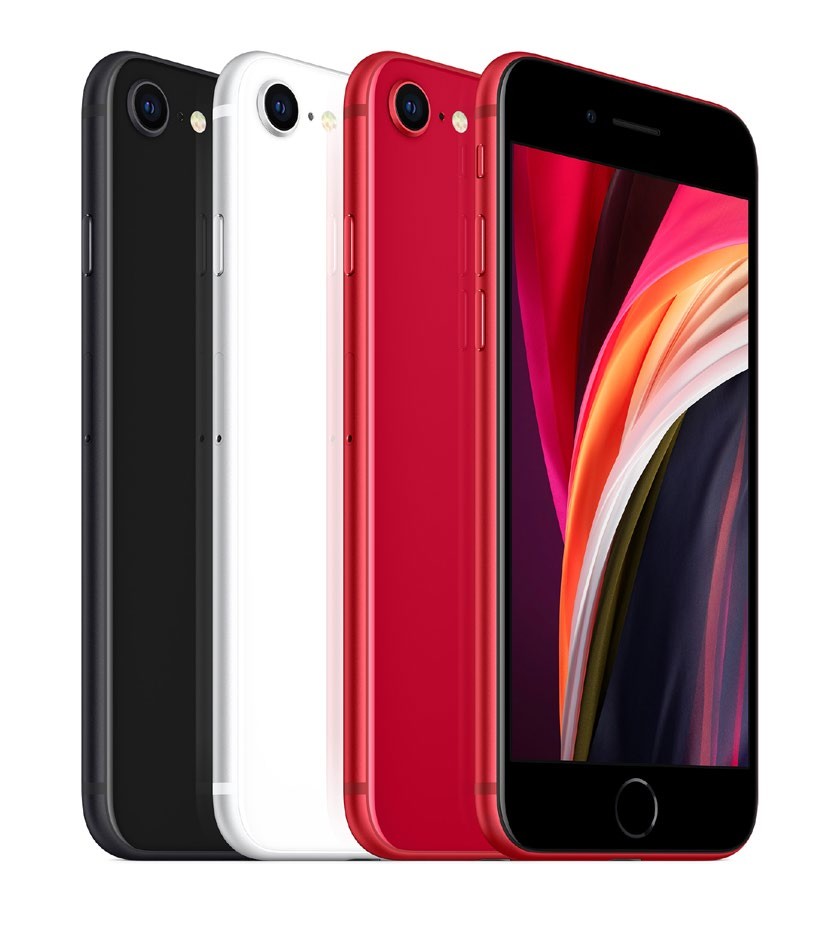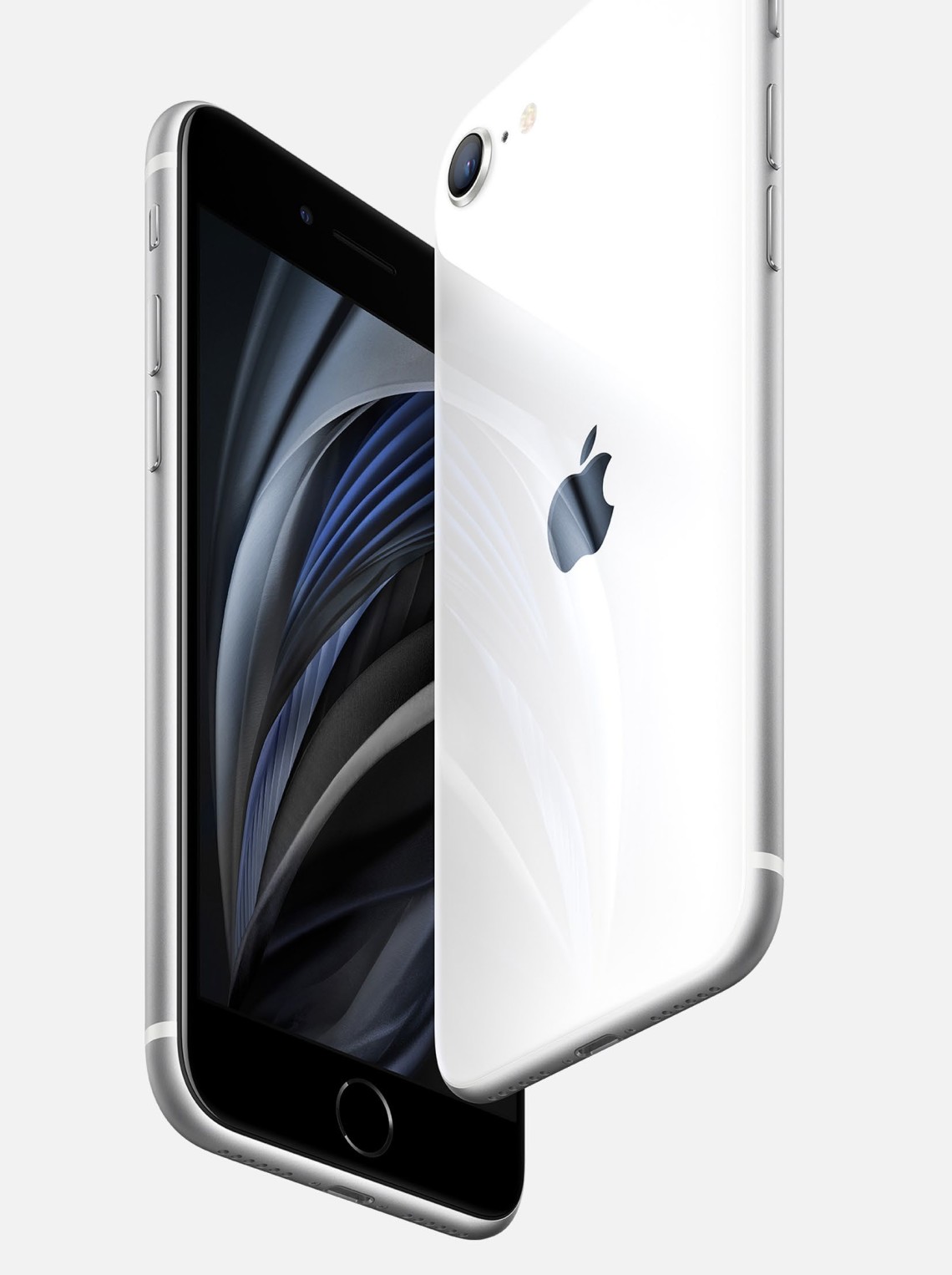Apple iPhone SE.


Apple iPhone SE.
At long last, Apple finally has a new entry-level iPhone. The original iPhone SE was introduced in March 2016 and was discontinued about 2.5 years later in September 2018. On paper, the new iPhone SE looks like the result of a parts bin raid. Physically, it’s identical to the iPhone 8; the two can even share phone casings. However, it features the same A13 Bionic processor in the current iPhone 11 series phones. And it has the same camera specs as the iPhone XR.
And then there’s price. Starting at $649, the new iPhone SE is considerably cheaper than the other iPhones in Apple’s stable. The second cheapest iPhone, the iPhone XR, starts at $979 – that’s $330 more. The iPhone 11 and iPhone 11 Pro starts at $1,149 and $1,649 respectively. This new iPhone SE starts with 64GB, and if you want more storage, the 128GB version is $719 while the 256GB version is $889 – still well under $1,000.

The iPhone SE comes in black, white, and PRODUCT(RED).
The new iPhone SE comes in three finishes: black, white, and (PRODUCT) RED. Regardless of the finish you pick, they will come with black bezels. Even if you aren’t obsessed with screen-to-body ratios, those bezels are jarring on a phone released in 2020. At a time when even cut-price Android phones can have near bezel-less displays, surely Apple can do better?
Fortunately, the build of the phone makes for it. The body is aerospace-grade 7000 series aluminium and the back of the phone is glass. According to Apple, it uses no less than a seven-layer ink process to achieve the final colours on the iPhone SE.
At 4.7-inches, the display is small by today’s standards. Apple calls it a Retina HD display and it has a resolution of 1,334 x 750 pixels. That sounds underwhelming, but with a pixel density of 326 pixels per inch, it’s actually the same as the iPhone XR and the new iPhone 11.

Apple new Smart HDR algorithm will intelligently light up subject’s faces even against a strong backlight.
AT A GLANCE
DISPLAY
4.7-inch Retina HD
PROCESSOR
A13 Bionic
STORAGE
64GB, 128GB, 256GB
PRICE
From $649
Obviously, it can’t compare against the Super Retina XDR display on the iPhone 11 Pro, but it’s crisp, sharp, and bright enough in all but the harshest of sunlight. Crucially, colours look accurate and vivid. It also has TrueTone technology, that colour corrects the display based on the lighting in your environment.
Below the display is the familiar Home button with Touch ID. Having been accustomed to Apple’s Face ID, this feels like a relic. At any rate, Touch ID remains wicked fast and in today’s world where masks are a constant, it is actually much more reliable.
While it doesn’t have a headphone jack, the iPhone SE does have other features that I think will be appreciated by many users. The first worth mentioning is that it is IP67 water and dust resistant. This means it can be submerged in up to a metre of water for up to 30 minutes. This shouldn’t be overlooked since it means a little rain or an accidental splash of water won’t send you panicking and rushing for the hairdryer.

Touch ID can be used for Apple Pay transactions.
It also supports wireless charging, making it so much easier if you just want to give your phone a quick mid-day juice up. Plus, it’s a feature that’s not supported by many Android phones in this price range.
With its A13 Bionic chip, the iPhone SE blitzed our benchmarks. Mostly, it performed at the same level as the iPhone 11 Pro Max, but it was a tad behind on some benchmarks like AnTuTu and 3DMark, which could be because of its smaller memory (3GB vs 4GB). At any rate, Apple’s cheapest phone handily outperforms flagship Android phones that cost twice as much or more like the Samsung S20 Ultra (Exynos 990), Huawei P40 Pro (Kirin 990), and Google Pixel 4 (Snapdragon 855).

In well-lit situations, I think most people will struggle to tell the difference between photos taken by the iPhone SE and the iPhone 11 Pro. The more expensive iPhone 11 Pro has more detail, but it’s not immediately apparent on a phone’s screen. It’s only in poor light that the difference becomes very apparent. That’s because the iPhone SE does not possess the cheat mode that is Apple’s fantastic new Night Mode or the company’s new high-tech Deep Fusion camera feature.
Where the iPhone SE really excels, however, is in video. It can take 4K videos up to 60fps with optical and software stabilisation. You can even opt for an extended dynamic range mode, but it’s then limited to 4K/30fps. Videos on the iPhone SE have great dynamic range, colours, and stabilisation, which are things that even flagship Android phones still struggle to do properly today.

All things considered, the new iPhone SE makes you wonder if you really need all of the fancy features offered by today’s flagship-class phones. Sure, larger displays, face recognition, and multiple cameras are all nice, but are they really necessary? What most people really want out of their phones is good performance, a great camera, and software updates to keep the phone secure and usable over the next few years. And if you agree, the iPhone SE ticks all of these boxes. And all for just $649.
CONCLUSION
Dated looks aside, the iPhone SE is fast, takes good photos, and offers genuinely good value.
PICTURES APPLE























